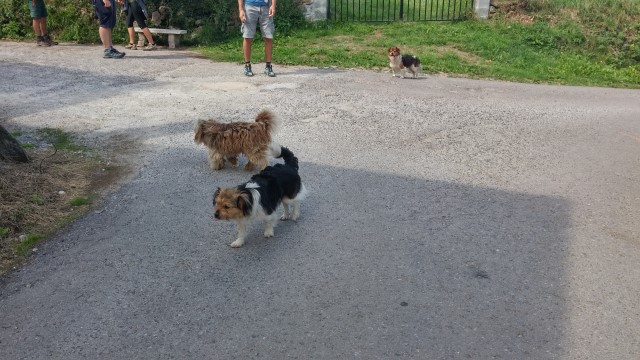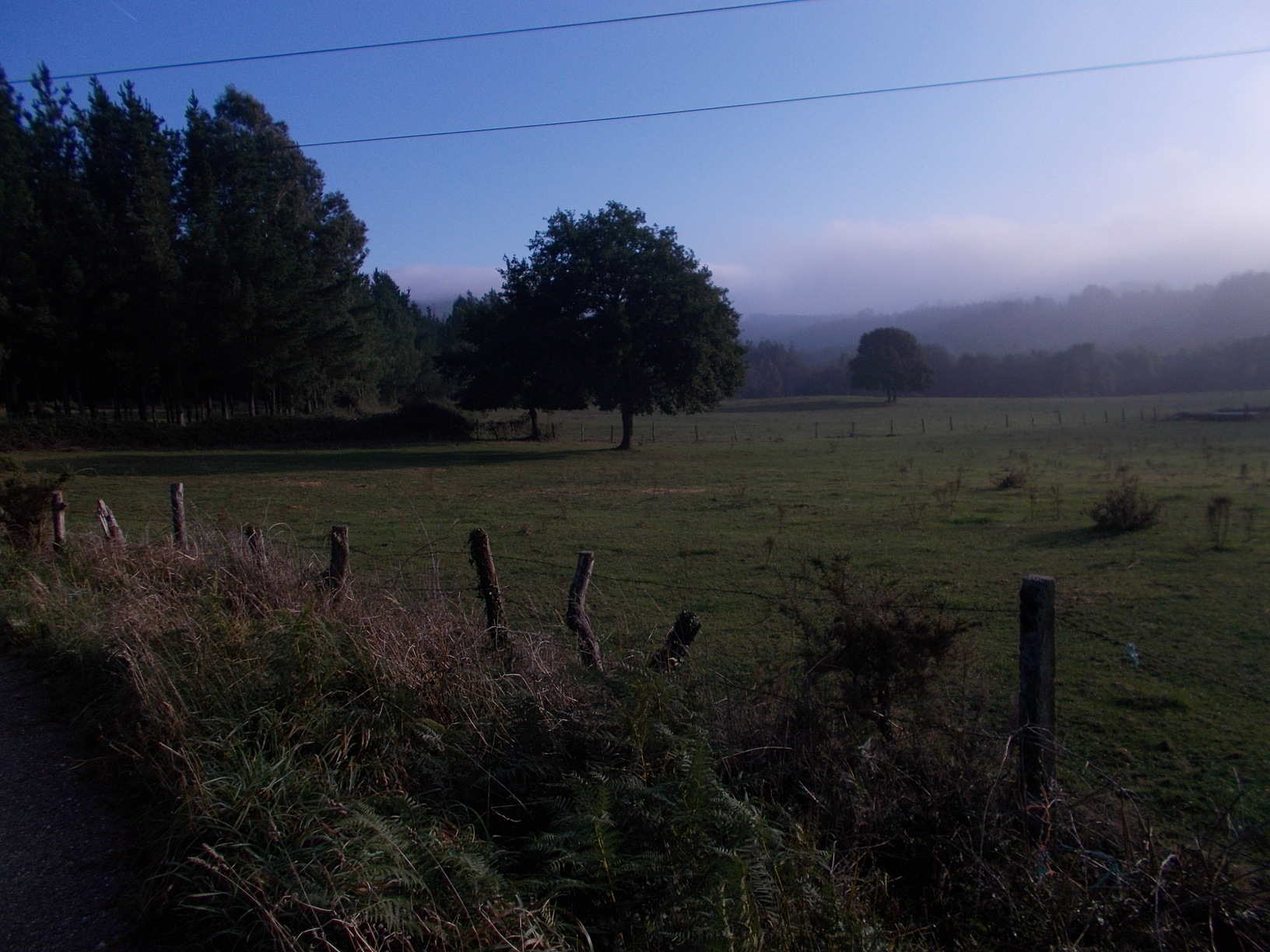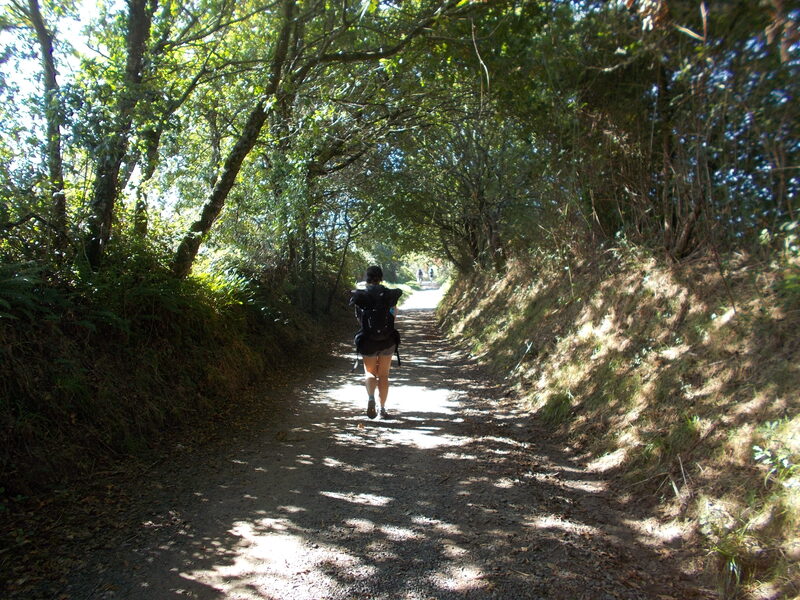If you’ve ever traveled to Latin America, or to certain parts of South East Asia, no doubt you’ve seen thousands of them. Dogs in poor health, often half-dead, spending their days spread out on the ground, waiting for a miracle, or for a stranger throwing them some food. Or those huge dogs in Nepal with soft steps, dogs that may follow you for hours or even days on trails, and unless you turn around you won’t even notice their present. They walk as quietly as tigers. In reality, vast majority of these animals are not dangerous. They are just poor, and deserve sympathy rather than anger or fear, exactly like inhabitants of these “third-world” countries who struggle to earn a decent living.
Having said that, I understand that some people are simply afraid of dogs, especially of stray dogs. Whether or not one can encounter such animals on the trails of Camino de Santiago may play a big role when it comes to their decision of embarking on the camino. So how is the situation in Spain now? will you meet stray dogs on these ancient pilgrimage roads? And do you need to worry, or perhaps even take a pepper spray with you on the Camino? We will try to find the answers on the following lines.
* May also interest you: Can dogs sleep in the albergues?
Table of Contents
Spanish government does everything to keep stray dogs out of the Camino
Camino de Santiago isn’t only a cultural heritage and a life changing experience for thousands of people each year. It is also an important source of income for the Spanish government. An average pilgrim spends a few thousand euros on their pilgrimage, and with the quantity of pilgrims on the way each year, you can easily do the Math.
Spanish government wants people to come to the country and do the pilgrimage. And they try to avoid any negative publicity. But we live in 21sty century. People crave for bad news–especially those sitting at home, looking for an excuse for their passivity and lack of courage. The last thing Spanish government wants to see on the news are stories of stray dogs attacking pilgrims and causing injuries. Hence they do everything they can to prevent the issue, regularly monitoring the area, and catching the stray dogs. Comparing twenty years ago and now, the situations has improved a lot!

– Bunch of small friendly dogs roaming freely in one of the villages on Camino del Norte. These fellas are no stray dogs though, just the owner didn’t feel it was necessary to keep them locked
Not all Caminos are equal
Most Americans know only one Camino de Santiago (the French Way from Saint Jean Pied de Port to Santiago de Compostela), and most Europeans only four (French, Norte, Portuguese, Via de la Plata). In reality though, there are more than twenty way-marked Caminos in Spain alone. And while over hundred thousand people follow the French way every year, the yellow arrows of some lesser-known pilgrimage ways do not witness more than two hundred pilgrims annually.
What’s more, you have to realize that Spain is a vast and diverse country. It’s not all riches and history. You have many rural parts, many ghost villages and forgotten places. And while these places no doubt have their charm–at least for me they do, Spanish government does not care about them much, and you can no doubt encounter stray dogs out there. However, when we look only at the two ways belonging to the cultural heritage of UNESCO–French, and Norte, encountering a stray dog is extremely rare.
On Via de la Plata, however, or Camino Mozarabe, or Liebaniego, simply the less developed ways that do not attract pilgrims in quantities (and the government does not care about them much either), your chances of meeting a freely-roaming dog with no owner are much higher. If you are afraid of dogs, you should take this into consideration when choosing your way.
* May also interest you: Finding love on Camino de Santiago – Does it happen?
The myth of walking poles and stray dogs
I’ve heard if many times: if you are afraid of a dog, take waking sticks with you on the camino. Dogs won’t attack you once you have a walking stick, and you can also use it as a protection. It seems like common sense, but my personal experience does not prove it. I’ve been threatened or attacked by a dog on the camino, or witnessed such an incident five times. It may seem like a lot, but remember that I’ve walked thousands of kilometers in Spain. And every time it happened, it happened to a pilgrim with a walking stick.
What people do not realize is that most of these dogs weren’t always stray dogs. They lived with someone, but they were often mistreated, beaten–yes, with a pole or stick, and then their owners simply threw them away and they started to live on the streets, or in the fields. Many of these dogs have bad associations when it comes to sticks. Dogs almost never attack you for the sake of attacking–unless you try to rob some house they guard of course. Stray dogs guard no houses though, and I’m sure you’re not on the Camino to rob people anyway.
However, if a dog has been beaten with a stick before, the self-defense mechanism may activate anytime they see such a stick again. They see a pilgrim with a stick, they feel threatened, and they will come after you–not necessarily to do you anything, but to scare you away (which can be a pretty unpleasant experience to say the least). So while a walking stick can help you in a direct encounter with a dog, don’t forget that it may also attract its attention, which would not happen if you did not have it with you.

– Peaceful dog resting in a shade on a hot spring day, Via de la Plata
If you are afraid of dogs, walk with another pilgrim or carry a spray
In my opinion, it would be a huge mistake to skip the camino just because you are afraid of dogs. As I already mentioned, you won’t meet (m)any free-roaming dogs on most popular Caminos, such as the French way or the Camino de la Costa on the north of Spain. And even if you meet the dogs, most of them will be peaceful and friendly. Just walk by without initiating an eye-contact, and in nine out of ten cases the dog will neither follow you nor bark.
* May also interest you: Ultralight packing list for the Camino – below 5 kilos!
If your fear is stronger than you, however, you can always walk with other pilgrims, and you can even carry a small pepper spray (originally designed against bears) as a last-minute protection against stray dogs. I’ve seen pilgrims carrying such a spray, but I’ve never seen anyone actually using it. As long as it helps them feel safer, however, and enjoy their camino instead of worrying about chance encounters with stray dogs, it is probably worth carrying it on your backpack.
Story of one stray dogs saving me from another dog on the Camino
I’ve had my fair share of experiences with dogs on the Camino and elsewhere. One encounter stands out though, and I will likely never forget it. This is how it happened: So I was walking Via de la Plata in 2017. It was a hot spring day, and there weren’t many pilgrims around. I was on my own, tired, and currently walking with two expensive hiking poles from Leki (a great brand for hiking and trekking poles by the way). Being in the middle of two villages, basically in the middle of nowhere, suddenly a bulldog approached me. It was not barking–which is a bad sign. As soon as it got to me, it caught one of my walking stick in its mouth, and, twisting back and front, it tried to take it away from me.
I started shouting on the dog, and tried to pull the stick from its mouth, but the dog would not let go. So I slowly continued forward, my heart rate highly elevated, and this angry dog now with foam around its mouth “attached” to my walking stick, growling. All the time I was shouting on the dog, and trying to get it out of the pole. But it would not let go, and I was getting more afraid. I came to a point when I actually considered simply dropping the pole, letting the dog do whatever it wanted with it. But then the most unexpected thing happened–another dog emerged from the bushes.
Now bulldog isn’t the friendliest of dogs, but at least it is relatively small. This second dog that sprang out from the bushes was white, and incredibly big. I couldn’t tell the breed, but I can tell you I got really scared. Because the dog was likely heavier than me (I’m a thin guy), and if such a dog wanted to kill me, it would not struggle to achieve it. It started growling and barked a few times–but it wasn’t looking at me–it was looking at the bulldog! What happened then still remains a mystery to me.
The big white dog actually approached a bulldog, and “gently” bit it to the neck. It was just then, after perhaps five minutes of me struggling against the smaller dog, that it finally let go the pole. It looked at the bigger dog, both of them said something with their barking, apparently communicating together, and then both disappeared into the bushes again. The huge white stray dog I was so scared of actually saved me from the nasty small stray bulldog. Or at least it saved my expensive Leki hiking pole :).
Final thoughts
Just like homeless people, homeless dogs belong to the scenery of Spain. Once you walk 1,000 kilometers in any country of the world, it is highly unlikely that you won’t meet some stray, unchained, or even barking dogs. It is something one has to count with. However, you can take some precautions, such as walking with other pilgrims, or carrying the “bear spray” attached to your backpack, perhaps next to the pilgrim’s shell.
On the other hand, incidents with dogs are extremely rare, especially on the most popular Caminos. Statistically speaking, it is more likely to have a collision with a car on the Camino than experiencing some fight with a dog. I hope that stray dogs won’t discourage you from walking the camino, and see you on the way!
Matej
May also interest you: Walking the camino over 70. It is doable?




![Ultralight Packing List for Camino de Santiago [2025 Edition]](https://caminolovers.com/wp-content/uploads/2022/03/altra-shoes-640-x-480.jpg)


